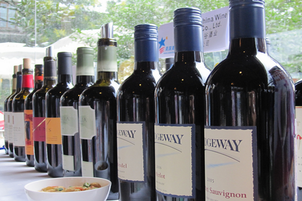‘Rampant inflation’ and red tape cause Argentine wine woe

Impressive export growth for Argentine wines since the early 2000s – due to quality, innovation and value, notably in signature varietal Malbec – led to demand for native wines at higher prices, but Rabobank’s analysts Stephen Rannekleiv, Marc Soccio and Valeria Mutis say this changed in 2012.
“Production costs have increased as much as 100% over the last four years, and the movements in the exchange rate are far from being on par with the inflation rate,” they write in the ‘Rabobank Wine Quarterly Q3 2013’ report that covers international market trends.
“Furthermore, lack of public infrastructure, red tape and a number of trade restrictions are increasingly complicating Argentina’s export business,” the analysts add.
US Hispanics offer ‘natural’ opportunity
Wineries exporting wines for less than US $30/case are reportedly losing money, Rabobank notes, stating the Argentine challenge: regaining competitiveness without eroding the strong reputation of native wines, especially since the country can no longer compete profitably at lower price points.
The US receives 47% of Argentine wine exports, but Rannekleiv et al. identify US Hispanics as a large community “growing in number, influence and buying power”, and a natural, untapped niche market, given projected growth in wine sales to this group by up to 50m cases in the next 20 years.
Mexico is another natural market with “enormous potential” for Southern Cone or Spanish wine producers, Rabobank’s analysts add, due to a large, growing population with an expanding middle class, and relatively low wine production by global standards.
Targeting millennials with ‘approachable wines’
Beyond these ‘natural’ markets, strong pricing gains in Canada (8% of Argentine exports) and China (1%), for example, suggest growing market appreciation for Argentinian wines, the report states, “making these markets attractive options for directing future promotional efforts”.
And with millennial consumers born between the early 1980s and 2000s driving growth in the US and elsewhere, Rannekleiv et al. believe that innovative Argentinian products such as sweet red blends and “other approachable wines” could also attract new drinkers.
“The current challenging scenario can be seen as an opportunity to reshape the existing wine portfolio in order to adapt to the new trends driving the sector,” they write.
“Looking beyond the short term, more favorable economic policies could also help to boost exports.”








